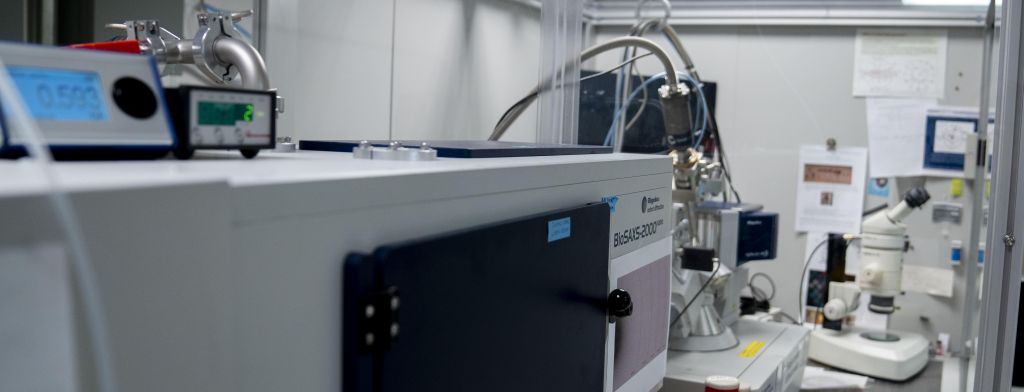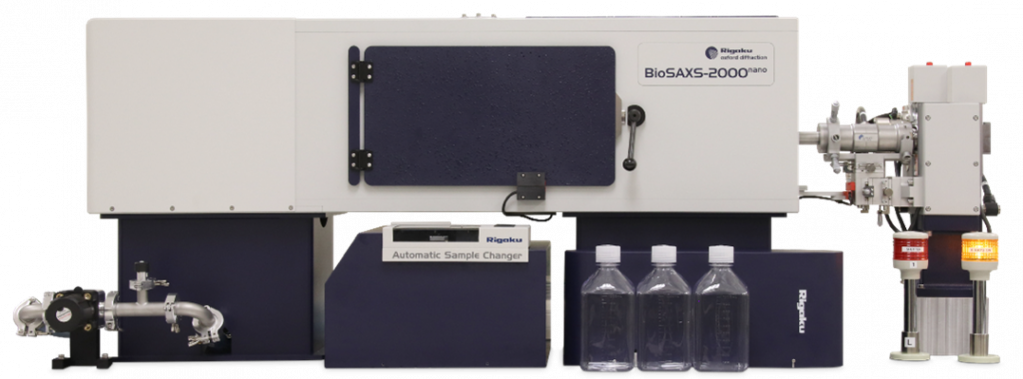
The BioSAXS-2000 2D-Kratky system is a high performance compact SAXS-WAXS solution for the home lab

Uses
Small angle X-ray scattering (SAXS) from biological macromolecules such as proteins and nucleic acids gives information on the size and shape of the macromolecules in solution. It is increasingly used to provide details of the radius of gyration, molecular weight and to calculate solvent envelopes of proteins, RNA, DNA and their complexes. It sheds light on the oligomerization state, stoichiometry of complexes, conformational changes upon ligand binding, screening for structural changes with formulation conditions (e.g. pH, ionic strength, additives, temperature etc) and other applications.
Specifications
- The equipment parts include a Kratky block collimator with motorized alignment, motorized beam stop with embedded photodiode to monitor beam intensity and measure sample transmission factor.
- For SAXS, minimum q of 0.006 Å-1 to maximum q of 0.6Å-1 is output. For WAXS with z-axis sample motor movement enabled, a maximum q of 2.5Å-1 is measured.
- Capillary cell holder with five capillary cell supports and with 2D sample translation for scanning.
- Temperature control by an external water chiller/heater, temperature range of 4 – 60°C.
- HyPix-3000 Hybrid Photon Counting (HPC) detector for high sensitivity and low-noise measurement of SAXS experiments.
- It also includes the OptiSAXS Confocal Max-Flux Optics that is designed specifically for SAXS-WAXS to provide faster data collection with higher signal to noise.
- The 2D-Kratky geometry provides significantly more flux over its pin-hole style counterpart and provides optimal solution analysis of macromolecules to gain insight into Macromolecular complexes, conformational changes, and foldedness.
Details
Can also be used in conjunction with SEC-MALS whereby purified fractions of peaks of interest from SEC-MALS can be collected and then run on BioSAXS
Research reported here is supported by the NIH grant S10 OD028589 for the X-ray instrumentation upgrade for single crystal diffraction and solution small angle scattering, to Dr. Neela Yennawar, X-ray Crystallography core facility, Penn State Huck Institutes of the Life Sciences.